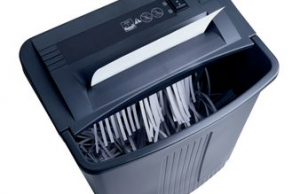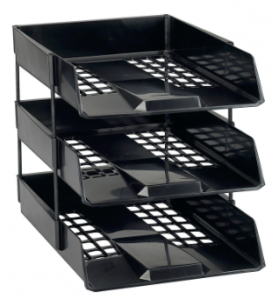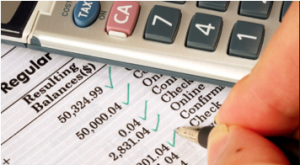
It’s easy to understand the importance of regular health checks, especially after reaching a certain age, but what about a regular “financial healthcheck”?
Most people ignore it and don’t address it until much later than they should. There are two key issues, amongst others, with delaying this. Firstly, it can be significantly more difficult to achieve the kind of lifestyle that you perhaps imagined having, and secondly, at best it delays the process of achieving your financial goals.
It’s quite understandable that people neglect their personal finances until later- either through lethargy, the cost of doing it, or perhaps simply the lack of know-how.
The fact is, completing your financial healthcheck should be started much earlier than the recommended free NHS health check from 40 years old, and it should be done more regularly than every 5 years – ideally as a minimum once a year.
You might ask the question “how do I start and complete a financial healthcheck?”
The masterMONEYsimply (MMS) Journey Planner offers a simple solution – it’s your roadmap to completing a personalised financial healthcheck. In the process it comprehensively overhauls your finances. Similar to taking a vehicle for it’s annual MOT, completing the MMS Journey Planner at least once a year helps you stay on track with your financial goals.
Your personal finance journey begins by getting super organised
It begins with a very important but often neglected process – organising your paperwork.
I realise the prospect of sorting through loads of paperwork, especially if it has built up over long periods might be a daunting one, but it’s a vital first step to your better future.
To get you motivated, it’s worth reflecting on the rewards that come from being on top of your paperwork. This should provide enough impetus to get you started.
What are the benefits?
Besides the obvious benefit of the clarity of mind you get when you declutter anything in your life, there are some other very important ones that might not be so obvious when it comes to sorting out your financial paperwork. They include:
- A high-level view of your overall financial situation so you can easily see any areas of concern that needs addressing. From a risk management perspective this is critically important.
- To compare where you are now to where you want to be financially at a specified date in the future. This will enable you to identify the gap that needs filling. It helps with your overall goal strategy.
- It reveals your total net worth wealth figure. Why might that be important? – because it assists you to plan a strategy to reduce any future potential Capital Gains or Inheritance Tax liabilities. This could literally save you thousands.

- The awareness you gain should encourage you to take action to address certain areas of concern for you and/or your family.
- In the unfortunate event of your death it greatly assists your executor(s) to be able to manage your estate and assets. It will demonstrate a legacy of someone who cared for those left behind.
- Keeping on top of your finances and reviewing them becomes incredibly easy once you have them organised.
You might be thinking I’m over exaggerating a bit here with these benefits, but hear me out. Better still, complete these steps and you will understand what I mean.
With that in mind, let’s look at these simple steps to achieve this important task.
Step 1: Gather all paperwork together
Don’t despair if you are feeling overwhelmed by the sheer thought of going through piles of never filed paperwork.
No matter how much of it you have, gather it all together and prepare yourself to deal with it.
If you have a lot of it, do not feel pressured to do it all in one session. Break it down in phases and approach it piecemeal fashion if it helps.
Gather every piece of financial paperwork you have together into a pile or piles that you can start to work on. The paperwork you need to collect will include amongst others: bank and building society statements, all insurances, wills/other legal documents, savings and investments, pensions, utility bills, subscriptions, mortgages, memberships, other financial commitments.
The fact you have it all together means you are already making positive progress.
Step 2: Choose an appropriate area and start the separation process
Now identify a large enough area to begin the separation process – this might be a dining table or floor space. The area must be suitable to put your paper into piles relevant to the different classifications they relate to.
As a guide, you might want to classify the piles as shown below. Separating them in this way will help you continue through the MMS Journey Planner if you wish to complete the full financial health check process:
- Bank and Building society accounts
- Savings accounts
- Life and Protection insurances
- General Household insurances
- Legal documents eg. wills
- Pension funds
- Investments (individual company shares, funds etc)
- Property
- Loans and credit card information and statements
- Monthly or annual expenses
- Miscellaneous surplus
As you undertake the separation process try to avoid getting distracted by over-examining or reading any paperwork in depth otherwise it will slow you down- instead, try to identify the category each piece relates to as efficiently as you can. Don’t sort them into date order at this stage.
Paperwork that is immediately identified as no longer needed can be put aside for later shredding or recycling.
Aim to achieve this phase in a short timeframe to keep the motivation high.
Great work so far!
Step 3: Filter out redundant paperwork for shredding or recycling
This next step will take longer but it is important that it is addressed in a methodical fashion.
Carefully go through each individual pile. Now is the time to read and be clear you understand what each piece of paperwork is about.
If you have lots to go through, break the process down over a few sessions or days.
Any paperwork requiring immediate attention should be put into an “actionable” pile.
If there is anything you do not understand, or you are not sure of its relevance, put it to one side. Do not destroy anything you are doubtful about.
It is better to seek out someone later whom you consider knowledgeable and trustworthy to offer you guidance as to whether you should retain it. Get them to explain to you what it is, and the reason you should be keeping it. Otherwise you could call or contact the company that the paperwork relates to and ask them to explain about it to you.
It can also be worth doing a search using Google or a similar search engine to help you understand the paperwork that is confusing you.
Anything you are still unsure about keeping could be kept in an archive box just in case one day it is required. The box could be stored somewhere like a garage, loft or cupboard.
Remove anything that you confidently know is no longer needed, so it can be recycled or shredded. Confidential or personal information should not be put for recycling. It must be either shredded or burned to remove any potential risk of identity theft.
Invest in a shredder
A shredder can be a very worthwhile investment to make. It protects you against your confidential information getting into the hands of the wrong people and the possibility of becoming a victim to identity fraud.
If you don’t have a shredder, then it’s important to consider burning or destroying your sensitive paperwork by other means.

Step 4: Use a letter tray for “actionable” items
The “actionable” pile that you have separated out in the previous step can be put into something such as a letter tray.
You can place this tray so that it is visible on top of your desk or filing cabinet. That way you know it requires your attention.

Schedule time when you know you will be available over the next few days to work your way through the letter tray list.
Step 5: Order and file away
Go through each pile one at a time and sort them into date order. As you complete each pile, you can put them into a filing cabinet. Label the contents of the drawer on the front of the filing cabinet to aid easy identification and retrieval.
Continue this process until all the piles are in a separate drawer of the cabinet.
No doubt, at this point you will feel great satisfaction from the knowledge your paperwork is fully organised.
Security of your documents
It’s always important to think about the security and protection aspect of your financial documents. Certain items, a will for example, should be kept in a lockable and fire/water proof box. Remember to inform any executor(s) and/or trusted members of your family where the key and box is located in case of emergency.
Step 6: Complete your “bird’s-eye view” financial spreadsheet
This is the final but highly important part necessary to complete the first step of the MMS Journey Planner process – “Organising Paperwork”. It’s the documentation of the financial policies, savings, investments etc into a summary spreadsheet. Doing this means you will have an invaluable bird’s-eye view of your finances.

Go through each draw of the cabinet where you have filed your paperwork and collect relevant data on each individual policy or account to document it into a summary spreadsheet. Create your own, or alternatively if you sign up to my free 30-40 minute coaching consultation you will receive my “Organising Paperwork” spreadsheet as a special no obligation bonus gift.
Here is the coaching page link to sign up, https://mastermoneysimply.com/coaching/
As I mentioned earlier, there are many benefits of this bird’s-eye view. As a reminder here is a quick summary of them:
- quickly analyse your financial standing to identifyyour exposure to potential financial risks
- defining and planning your future goals
- motivating you to reach your goals
- reduce potential future capital gains or inheritance taxes
- reference sheet to assist an executor(s) in the event of death
Be aware and prepared for this process, particularly the task to obtain up to date information when creating the summary spreadsheet can take considerable time. It depends obviously on how much of it you have, but may require not just a few days, but weeks or even months to complete.
The key point here being it doesn’t matter how long it takes, so long as you maintain the momentum to complete the process.
The Experian Credit Score gives you an idea of how lenders may view you. It reflects your credit history, which companies look at to help them decide if you’re a reliable borrower. You can check your score for free – the higher it is, the better your chances of borrowing money at the best rates. It’s based on your financial behaviour, so you have the power to change it.
Maintain a system for managing it
Once you’ve completed this hugely beneficial process of organising your paperwork, I’m sure it’s time to reward yourself for a job well done. However, don’t consider it ends there because it’s an on-going, continuous and essential process.
The good news is that going forward, keeping your finances on track will be easy now everything is well organised.
It’s important to continue to maintain a system for managing your financial paperwork on a timely basis. My recommendation is to conduct a review at least once a month. It can take the form of a simple financial reconciliation– that means a simple cross-check of the entries on your bank and credit card statements.
Bank and credit card reconciliation
To reconcile your financial statements such as bank and credit card statements, it is simply a case of reviewing each line item to verify there are no errors, and no unexpected entries are showing.
Take this opportunity to also review whether adjustments can be made to reduce or optimise your spending patterns. This will help streamline the way you manage your money and assist you on the path towards meeting your future goals.
The exact process and timing of when you do this is for you to decide. Choose based on a system that works efficiently and is appropriate to you and your lifestyle. You might prefer for example using paper statements and marking off each entry manually, or perhaps reviewing it online and scanning through it briefly to check if errors exist.

The key point here is to maintain discipline over your accounts, expenditure and know what you have surplus at the end of every month. For example, are all the Direct Debits leaving your account still necessary? Can you cut the cost of them by moving to alternative suppliers? It is easy to be forgetful about what Direct Debits you have set up.
If direct debits exist that you no longer require, notify the organisation of your wish to terminate them first before cancelling them with your bank or building society.
More attention is given to this in the Budget Planning phase of the MMS Journey Planner.
Keeping tabs of your online payments
New technologies, online accounts, and payment methods, such as Apple pay or Paypal, can make it more difficult to keep track of your online expenditure. Records or receipts for payments made online may vary in the way they can be traced – perhaps in the form of an email or other digital means.
Digital currencies are adding further to the complexity of maintaining control and tracking your financial movements.
If you have multiple email addresses, as I do, it can be hard at times remembering which email account you used when making different retail purchases. This makes reconciliation of your payments ever more challenging.
The way I prefer to deal with these kind of tracing challenges is to create a manual record whenever I buy or sell anything, recording it on either paper or on my computer. It can appear a laborious process however, referencing the item, its value and the medium it was purchased or sold through. The benefit of doing it is recognised later when it comes to conducting the reconciliation process, and it maintains the financial discipline with the benefits that come from that already explained.
There may be more sophisticated online financial tracking tools or methodologies for doing this, and as I find them I will share them with you inside the masterMONEYsimply community. If you know of any I would be happy to hear about them.
I hope this article will help motivate you to take action on progressing with the first part of the MMS Journey Planner process. I welcome your feedback and to read the story of how this is helping you on your financial journey.
Organising your paperwork is the first in the 8 steps series to complete a financial healthcheck journey, referred to as the MMS Journey Planner. If you are interested in learning more about this and to be informed about my latest articles I invite you to sign up to my free newsletters on the masteMONEYsimply homepage. I also offer coaching to complete a personalised MMS Journey Planner, click here for more information and sign up form to receive a free consultation.
Any feedback or recommendations you would like to share with me, please send me an email at david@mastermoneysimply.com.
The mission of masterMONEYsimply is to provide impartial financial education and coaching to enable you to optimise your personal finances and make decisions to achieve your financial goals.
